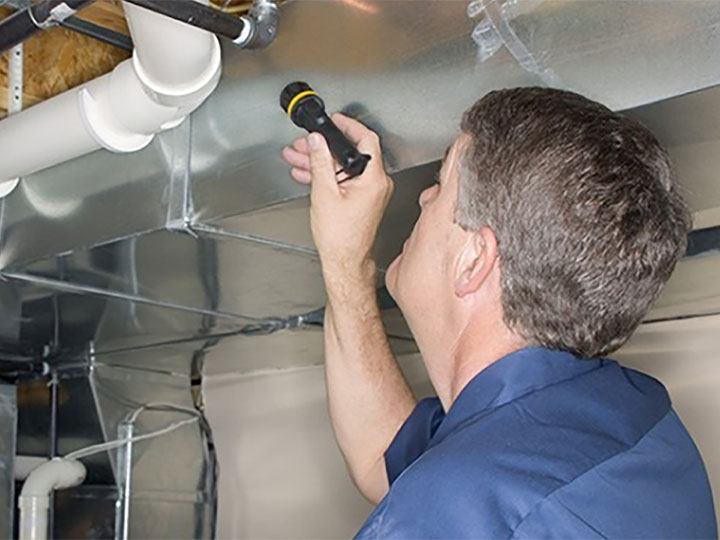Buying a property is one of the biggest financial decisions you’ll make, so knowing how to fix any issues identified in a building and pest inspection is essential.
The defects you can’t afford to ignore

Finding the perfect property can feel like searching for a needle in a haystack. Even if a property seems ideal at first, a closer inspection might uncover defects that need attention.
The best way to identify these potentially costly issues is by trusting a qualified building and pest inspection specialist. A thorough report from an expert can help you avoid making a costly mistake.
Additionally, having an inspection report can strengthen your negotiating position. If defects are found, you can make a lower offer that reflects the cost of necessary repairs, ensuring a fair deal.
Uncovering hidden defects
When purchasing a new property, it's important to note that some issues may not be fully disclosed by the seller or visible to the naked eye. To protect yourself from costly defects, it's advisable to obtain a building and pest inspection report from experienced inspectors. As you evaluate a property, be mindful of these potential defects:
Does bouncy or uneven flooring point to a structural issue?
Uncovering a property's secrets is often as much about how it feels as how it looks.
When assessing flooring, pay attention to how it feels underfoot and whether it's level. Gaps or unevenness between the floor and skirting may indicate sinking stumps. For timber floors, lightly jumping in various areas can reveal rotten floorboards, termite infestations, or issues with the subfloor framing.
For concrete floors, watch for buckling tiles or rotten carpet—both signs of dampness beneath the surface. Addressing dampness in a concrete slab can be costly, and significant cracks in the concrete may point to underlying structural issues.
Are the wet areas correctly sealed?
Look out for signs of leaks in wet areas, such as bathrooms, laundries and kitchens. Fresh paint jobs could be used to hide water leaks, rotting timber and signs of rising damp.
Testing the water pressure to all the taps is important, as it could reveal bigger issues. Partially filling sinks and bathtubs, then watching how quickly the water drains away is another effective way to check for potential issues such as poor drainage.
Cracks in the walls and ceilings can indicate major problems
Splits around cornices and joints where walls meet ceilings often show tell-tale signs of defects.
Fresh plaster and paint work are often used for a quick cover-up, but an experienced inspector knows how to see past these concealments to find bigger, and potentially dangerous structural issues.
Illegal renovations/extensions could cost you a fortune
This escalating problem can result in tens of thousands of dollars in expenses for buyers. While conveyancing searches may sometimes uncover unauthorised building work, the best way to detect it is through a thorough inspection conducted by qualified building inspectors who can spot when something doesn't meet standards. If illegal renovations and extensions contravene local building regulations, you could face significant legal fees and expensive repairs and refurbishments to rectify the situation.
Are there signs of rising damp?
Tapping solid brick walls and listening for a change in tone, or a hollow sound, can indicate an issue with damp. Rotting skirting and architraves, as well as peeling paint or lifting wallpaper can be other warning signs.
Plaster patch-ups and fresh paint may be signs of a cover up. To uncover the true condition of the property, be sure to book an inspection with a an experienced building inspector.
Is the roof secure?
Buckled eaves and water stains could signal underlying issues.
Broken roof tiles can provide entry points for pests and allow water to infiltrate, potentially causing significant damage to the ceiling and roof space. Even small holes can lead to major leaks, and replacing a roof can be costly.
Do the windows work?
Excessive condensation on windows and sills, along with signs of mould growth, can be a sign of poor ventilation or damp issues. Ensure that windows open and close smoothly and check for cracks in the windowpanes or rotting/rusting window frames as these may signal water leaks.
Is the electrical wiring safe and compliant?
While a simple flick of a power point or light switch can tell you if the electricity is working, it can’t reveal the condition of the wiring, or its compliance. Asking questions about recent renovations can help you to understand when work may have taken place and if the work was done by a licensed electrician.
Regardless of the type of property you plan to buy, it represents a significant investment that requires thorough legal protection and due diligence. Don’t risk purchasing a property with defects that could be costly to address. Before you buy, contact Rapid Building Inspections to book a building and pest inspection or structural condition inspection.
Our team of experienced inspectors are committed to helping you find the right property. With our use of the latest technology, we ensure your property is in excellent condition and ready to enjoy from day one.



